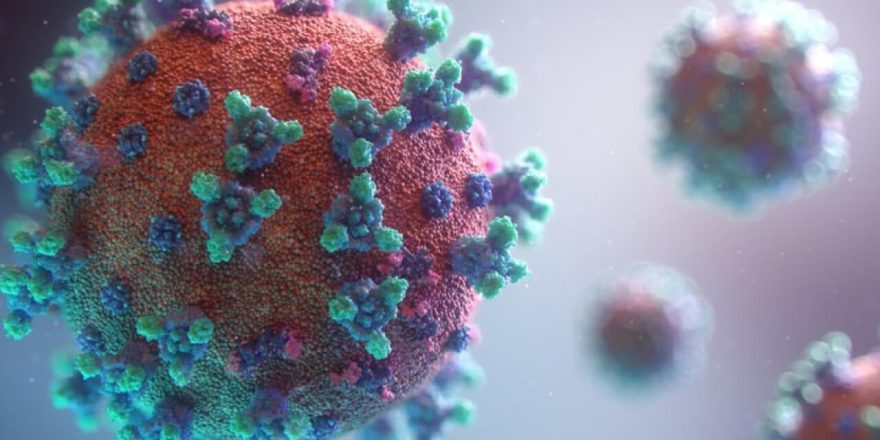WHY IS EXERCISE & DIET MONITORING SO IMPORTANT FOR PEOPLE WITH DIABETES?
Diabetes is a chronic disorder that requires lifelong management. Lifestyle modifications/changes are the foundation of diabetes management. These include healthy diet and regular exercise.
Exercise
Exercise is one of the cornerstones for the management of diabetes. Along with diet and antidiabetic medications, exercise forms one of the major pillars in the treatment of diabetes. A regular diet and exercise plan program can delay the onset of diabetes, help in the control of diabetes, prevent diabetic complications, and slow the progression of complications.
Compared to antidiabetic medication, exercise has the advantage that it is inexpensive and free of side effects. Hence it’.is important to know how and why exercise plays such a crucial role.
Why is physical activity so important for people with diabetes?
Diabetes is a condition where the cells of our body are unable to respond appropriately to insulin, which is known as insulin resistance. As a result, glucose builds up in the blood and is manifested as high blood glucose readings. Physical activity helps to improve insulin sensitivity. Insulin which is produced by our body or that was injected helps the muscle and fat cells to use the glucose in our blood better when we exercise regularly. This means that a patient with diabetes can get good control of blood glucose on a smaller dose of diabetes tablets or insulin if he or she has a diet and exercise plan.
Exercise also burns calories, which along with a healthy diet can contribute to weight loss. Exercise and weight loss have been shown to decrease certain risk factors associated with diabetes, such as high blood pressure and high cholesterol. Walking boosts “good” cholesterol. It lowers the risk of stroke and also reduces the risk of breast cancer. It also lowers stress levels and improves sleep. Over time, the heart will learn to pump more efficiently, allowing improved blood flow and decreasing the risk for stroke and other associated cardiac diseases.
Physical activity also improves our mood. Many studies have shown a strong link between diabetes and depression and exercise can reverse depression symptoms. As little as even 10 – 15 minutes of exercise per day can have a noticeable effect on how we feel.
But many persons with diabetes are unable to exercise, in spite of knowing the benefits and initiating their best intentions. This might be due to lack of space and time or for want of adequate facilities. However, most people find it difficult to exercise for want of proper guidance as to what exercise to do. Also, many persons with diabetes have other complications, which may prevent them from doing all the types of exercise that an individual without diabetes can do.
What is meant by exercise?
Exercise is simply getting physically active and increasing the heart rate. This can include walking, biking, gardening, climbing stairs, chair exercises, stretch-band exercises, yoga, etc. Be as active as possible in as many different ways as possible. Aim to do at least 30 minutes of moderate-intensity physical activity on most, if not all days of the week.
Like any other treatment modality, exercise also has to be tailored to the individual; What works for one person need not work, or necessarily be good, for another individual. It would be better to seek expert guidance e.g. . from an exercise physiologist/ trainer before starting an exercise program.
Components of exercise program
- Stamina related activity
- Strength building
- Flexibility and mobility
- Agility and coordination (harmonious action between muscles, joints and nervous system)
The following are the exercise components along with their benefits.
Proper warm up
An appropriate warm-up will result in an increased speed of contraction and relaxation of the muscles. It also increases blood flow through active tissues as local vascular beds dilate, increasing metabolism, and muscle temperatures. Warm-up facilitates oxygen utilization by warmed muscles because hemoglobin releases oxygen more readily at higher muscle temperatures. It also facilitates nerve transmission. It allows the heart rate to get to a workable rate for beginning exercise. Warm-ups keep one mentally focused on the training or competition.
Stretching exercise
Stretching both before and after fitness program is important in maintaining a healthy body. Stretching at other times of the day is a great way to limber up, relax, and reduce stress. For peak fitness, be sure to include stretching in daily routine. Stretching provides a sense of peace and well-being, increases blood flow, and makes muscles supple. Stretches lengthen muscles and improve tissue flexibility and elasticity. They increase the range of motion, balance, and coordination and also improve posture. Stretching also helps to prevent accidents and injuries.
Walking
Walking helps in managing weight, controls blood pressure, and decreases the risk of a heart attack. Walking boosts “good” cholesterol-lowering the risk of stroke and heart attack. It also reduces the risk of breast cancer and type 2 diabetes, prevents colon cancer, constipation, and osteoporosis. Walking lengthens lifespan, lowers the stress level, and improves sleep. It helps in increasing the flexibility, by strengthening muscles, bones, and joints, thereby toning the body
Strength training
The benefits of strength training are virtually endless to those who wish to increase muscle size and tone. Here are a few other benefits of strength training. It increases muscle, tendon, bone, and ligament strength. Strength training reduces body fat, increases self-esteem, confidence, and self-worth. These exercises maintain general health by reducing the risk of injury. Strength training aids in injury rehabilitation and training for a specific sport.
Tips to move more
- Use the stairs both up and down instead of elevators. Start with one flight of stairs and gradually build up to more.
- Park vehicle a short distance before office and walk the rest of the way. If public transport is chosen, get off a few stops earlier and walk the rest of the way.
- While working take frequent activity breaks. Get up and stretch, walk around, and give a chance for your muscles and mind to relax.
- During the day if any free time is found, take a brisk stroll around the neighborhood or your office building instead of snacking.
- Do housework, gardening, or yard work at a more vigorous pace.
- When you travel, walk around the train station, bus station, or airport rather than sitting and waiting.
- Do all your work by yourself instead of not expecting assistants to help you.
- Get up, be active, and avoid using remotes.
DIET
Following a healthy diet is a fundamental aspect of diabetes management. There are some foods that can help us to control our blood glucose levels and at the same time, some can also raise blood glucose. Hence eating the right food is an important part of diabetes treatment.
WHY IS DIET IMPORTANT?
In plain terms, people with diabetes need to develop a routine with their eating. Because blood glucose is mostly affected by what we eat, eating a variety of healthy foods at regular times, and in regular amounts, helps us to regulate our blood glucose. If we take diabetes medication, regular mealtimes, and regular amounts of various foods also help us to get the most out of the least amount of medication.
- For overweight or obese patients, extra body fat makes it harder to make and use their own insulin. Following a reduced-calorie meal plan to lose weight is the best way to control blood glucose.
- To effectively manage blood glucose levels and glycated hemoglobin (HbA1C- 2 to 3 months of blood glucose average), it is important to understand how to balance food intake, physical activity, and medication. Making healthy food choices every day has both immediate and long-term effects.
- High blood pressure is more common in people with diabetes. A diet plan to lose excess weight and reduce salt intake is an important part of the plan to control blood pressure.
- Diabetes increases the risk of heart and blood vessel diseases. This risk can be reduced by keeping blood cholesterol, near normal. Avoiding animal fat reduces high cholesterol levels.
Dietary management
Dietary management is nothing but knowing what, how much, and when to eat in order to keep stable blood glucose levels. The food contains carbohydrates, fats, and proteins as sources of energy, plus many other important ingredients like vitamins and minerals. Each of these has different effects on blood glucose. Hence while planning a healthy diet for diabetes we have to additionally look for calorie content and check if the diet provides optimal and balanced nutrition with sufficient fiber.
Calories
Calories are the energy derived from the food with the help of insulin. The per-day intake of calorie/ calorie requirement depends on the type of activity profile (sedentary, moderate, and heavy), age, gender, and nutritional & physiological status of the individual
The daily calorie intake will be decided and planned by the doctor and dietitian. But it is always necessary to monitor the calorie intake.
Carbohydrates
Carbohydrates include all the sweets, starches, fruits, vegetables, etc.
These foods are responsible for an increase in blood glucose, which activates insulin release. Hence carbohydrate intake should be carefully controlled to keep blood glucose at target.
Refined Carbohydrates vs. Complex Carbohydrates
Sugary foods (sugar, sweets, jelly, jam, etc), refined or processed carbohydrates (white Rawa, maids, etc) raise the blood glucose rapidly whereas the complex carbohydrates present in vegetables and whole grains increase the blood glucose slowly.
Refined foods have a high glycemic index – they cause a sudden and sharp increase in blood glucose. If the body does not use this blood glucose, it is stored as fat. Whole grains, vegetables, and fruits have a lower glycemic index. Naturally occurring carbohydrates (like those found in whole grains, vegetables, and fruits) provide vitamins, minerals, and fiber. In addition, they usually contain fewer calories than foods with added sugar.
Fibre
Dietary fibre is a source of carbohydrate. Fiber is found in plant-based foods like fruit, vegetables, legumes, peas, brown rice, whole-grain bread, and cereals. Fibre is not digested or absorbed like other starches, and so has less of an effect on increasing blood glucose.
There are two kinds of fibre. Insoluble fibre is roughage–bran, skins and seeds, vegetables, and cereal. This kind of fibre promotes regularity in bowel movements by adding bulk, aids in weight loss, and blood glucose control by slowing digestion, helps prevent intestinal disorders, and reduces the risk of intestinal cancers. Soluble fibre is the part of the plant material which absorbs water and dissolves in the digestive system. Oat bran, barley, legumes, and fruit are high in soluble fibre. This fibre also works to moderate blood glucose and to reduce cholesterol and triglycerides.
Protein
Protein plays an important role in our body. It accounts for one-fifth of our total body weight. The role of protein includes –
- Builds teeth, muscles, bones, skin, and blood.
- Helps with growth and helps repair our body
- Regulates body processes.
- Carries nutrients and oxygen throughout the body
- Fights disease by strengthening the immune system.
- Provides a source of energy.
All proteins contain amino acids, which include nine essential amino acids and 13 non-essential ones. Our body can manufacture the non-essential amino acids from the food we eat, but not the essential ones. So we must eat proteins that supply these essential amino acids often or our body cannot function properly.
The sources of protein can be from plants such as whole grams (lentils) and dhal, or it can be from animal sources like meat fish, eggs, etc. Protein slows down the blood glucose rise by prolonging the length of digestion time.
The recommended protein choices are for non-vegetarians are egg white, fish, and lean chicken in moderation. High protein intake from animal sources should preferably be avoided. Vegetarians can include soya, pulses, whole grams (channa, rajhma, green gram, etc.), low fat milk, and dairy products.
Fats
The role of fat is to
- Provide energy and essential fatty acids
- Provide fat-soluble vitamins (e.g., vitamins A, D, E, and K)
- Add texture and palatability of food.
Food sources of fat can be visible (derived from animal fats) like butter, ghee, vegetable oil, vanaspathi or invisible (egg, meat, nuts and oil seeds). Fats and oily substances like cooking oil, cream, butter and mayonnaise do not raise blood glucose. It slows stomach emptying and decreases the rate at which blood glucose rises after a mixed meal. But it adds calories and cholesterol.
Fat is grouped into several categories like Saturated fats, poly-unsaturated fat and mono-unsaturated fats.
Saturated fat (less desirable) raises total cholesterol and LDL-C (low density lipoprotein cholesterol) or “bad” cholesterol – in the blood increasing the risk for heart disease. The food sources are ghee, butter, coconut oil, palm oil and vanaspathi.
Poly Unsaturated Fatty Acids (PUFA) lower total cholesterol and LDL, but when it is used in excess, it increases calories and lowers HDL (good cholesterol) and hence it is recommended to be used in moderation. The sources are sunflower oil, safflower oil, corn oil, cotton seed oil, soya bean oil, most nuts and fish oils..
Mono Unsaturated Fatty Acids (MUFA) lower total cholesterol and LDL but has no effect on HDL. The sources are groundnut oil, mustard oil, canola oil and olive oil. Gingelly oil and rice bran oil have both PUFA and MUFA.
Transaturated (Trans fats) (less desirable) also raise LDL-C. Trans fat is present in vegetable shortenings, some margarines, crackers, cookies and other foods made with or fried in partially hydrogenated fats.
Though fat is important and enhances the taste of food, it is essential to remember that they are concentrated source of calories in foods. Each gram of fat yields 9 calories (twice as many calories as protein or carbohydrates). Therefore it is very essential and important for every individual to lower the amount of fat in the daily diet. Below are a few tips to lower the fat content in the diet.
- Use non-stick pans
- Blot excess oil off fried foods
- Coconut garnished food should be kept only for special occasions.
- Choose low fat dairy foods such as double-toned milk
Glycemic Index
The Glycemic Index (GI) measures the speed at which food gets digested and converted to glucose. Carbohydrate foods which break down quickly during digestion have the highest GI and foods which break down slowly have the lowest GI . The grading of glycemic index is as follows:
- High ≥70,
- Medium 56-69
- Low ≤55
Why is glycemic index considered important? Since low GI food gets digested and absorbed slowly, the blood glucose rises slowly leading to less insulin demand. Hence low GI foods are recommended for diabetes as well as for weight reduction and to prevent heart disease.
On the contrary, high GI foods are digested quickly and rapidly increases the blood glucose and insulin demand leading to exhaustion of insulin reserves.
Generally cereals like white rice and tubers like potato, Yam, colocasia etc. have high glycemic index, fruits have intermediate glycemic index, legumes and lentils such as beans, peas, green gram and bengal gram and green leafy vegetables have low glycemic index and are beneficial for patients with diabetes. Foods with low glycemic index are generally rich in fibre.
Fruits
Whole fruits are recommended in moderation (1-2 servings). However very sweet fruit and fruit juices should be avoided.
Salt
Since diabetes patients are prone to get hypertension, salt intake needs to be restricted. Restrict pickles, papads and other salty foods.
Dietary Guidelines
- Eat three meals a day and a snack evenly spaced out throughout the day.
- Do not skip meals.
- Eat meals at about the same time every day.
- Eat a consistent amount of carbohydrate each meal and snack, and distribute carbohydrates evenly throughout the day.
- It is better to avoid sugar, honey, jaggery and sweets.
- Restrict processed refined food like maida – based products
- Roots and tubers should be used sparingly.
It is important to be mindful of what is eaten, and the effect it has on blood glucose by testing before and after meals.





2 thoughts on “EXERCISE & DIET”
Hello ..nice info..
Exercise diet nice explained everything